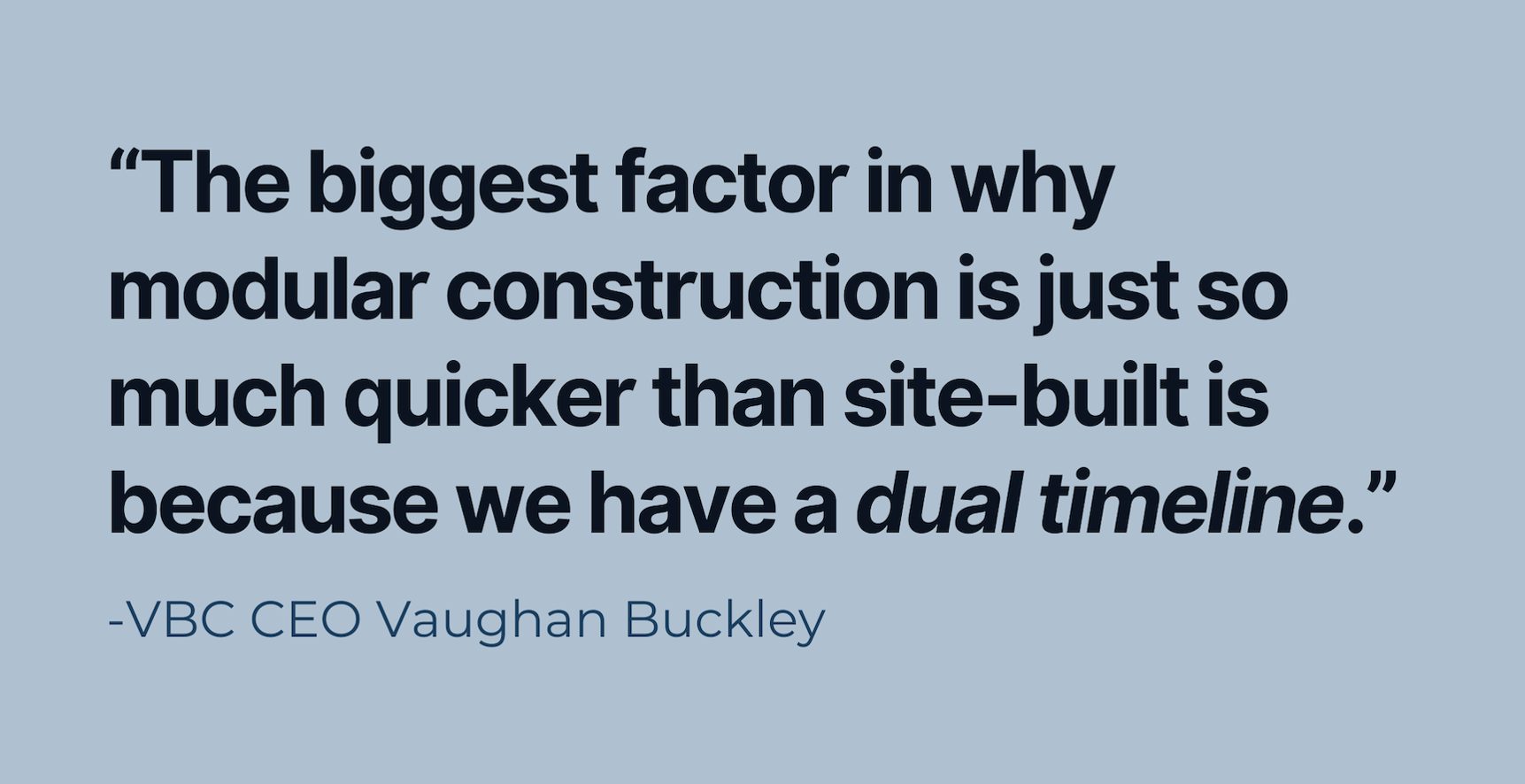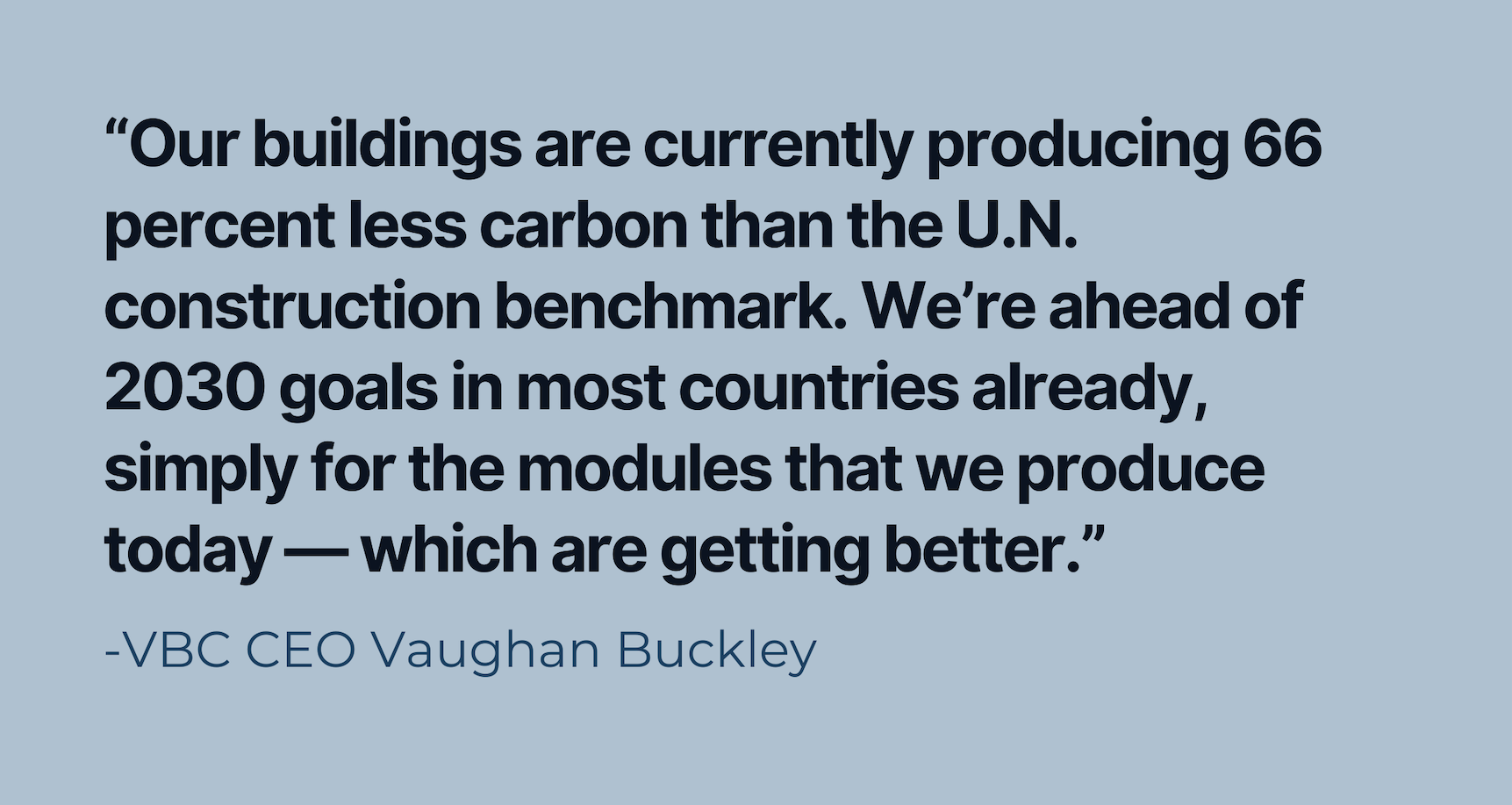Contents

Could modular construction be the answer to skyrocketing construction costs and labor shortages? Our friends of Freakonomics Radio seem to think so.
Volumetric Building Companies (VBC) CEO, Vaughn Buckley, was recently invited along with other experts to speak on the topic, “Why is it So Hard (and Expensive) to Build Anything in America?” Demand for homes is at an all-time high, meanwhile, the construction market struggles to keep up. However, modular companies like VBC are carrying the torch in innovative technology and processes that have proven to be a possible solution.
A Need For Speed, Literally
Time is of the essence. Traditional construction is no longer sustainable simply because it just takes too long.
Modular construction, as explained by Buckley, offers a remarkable reduction in project timelines.

This enables buildings to be produced in less than 50% of the time it would take traditional construction, which must run on a linear timeline. The modules, nearly 90 percent complete upon arrival, include everything from furniture to mattresses, making the on-site assembly primarily focused on foundational elements and connections.
Moreover, Buckley emphasized the transformative impact of a factory environment on the workforce. By shifting construction tasks to a controlled factory setting, the industry becomes more inclusive, allowing individuals who may face physical limitations to contribute effectively.
“People that don’t want to hang heavy things above their head and would rather work in an office job. They can now join a factory, work on a floor, use computers and robotics to help them, and be in a safe environment with the access to the tools that they need to do their job more efficiently.”
A Green Solution
An integral aspect of modular construction highlighted by Buckley is its positive environmental footprint.
Traditional construction is responsible for 40% of carbon emissions, but the efficiency of material use and faster timelines of modular construction have cut down those emissions by a large margin.

VBC continues to research and develop new sustainability methods to further enhance the environmental impact of modular construction.
Challenges to Come
Buckley did not shy away from acknowledging the significant challenges facing the construction industry.
“Construction is not just a construction-industry problem. It’s an every-industry problem. Construction builds the buildings that every other industry operates out of. The people that operate those other businesses live in housing that somebody had to build.”
Buckley underscored the urgency for a comprehensive overhaul in construction practices. Modular construction is positioned as a crucial tool in this transformative process, offering a new perspective on how buildings are created and assembled.
However, for modular construction to dominate the construction industry as needed, they’ll need some collaboration from the government.
“Canada has put over half a billion dollars into a recent initiative to speed up housing deployment, which has invariably gone to the modular and offsite-construction space, because there’s no way to speed up housing unless you put it in a factory. California has issued a home-key regulation, which gives equity dollars for units that are on the street within 12 months of that funding being issued. The only way to get units on the street within 12 months of funding is to renovate existing buildings or build in a factory.”
Vaughan Buckley's insights into modular construction offer a glimpse into a transformative approach that could revolutionize the construction industry. From addressing the workforce challenges to significantly reducing environmental impact, modular construction emerges as a compelling solution. As the industry grapples with its current challenges, the podcast provides a call to action, urging stakeholders to rethink traditional construction methods and embrace innovative approaches for a sustainable and efficient future.

